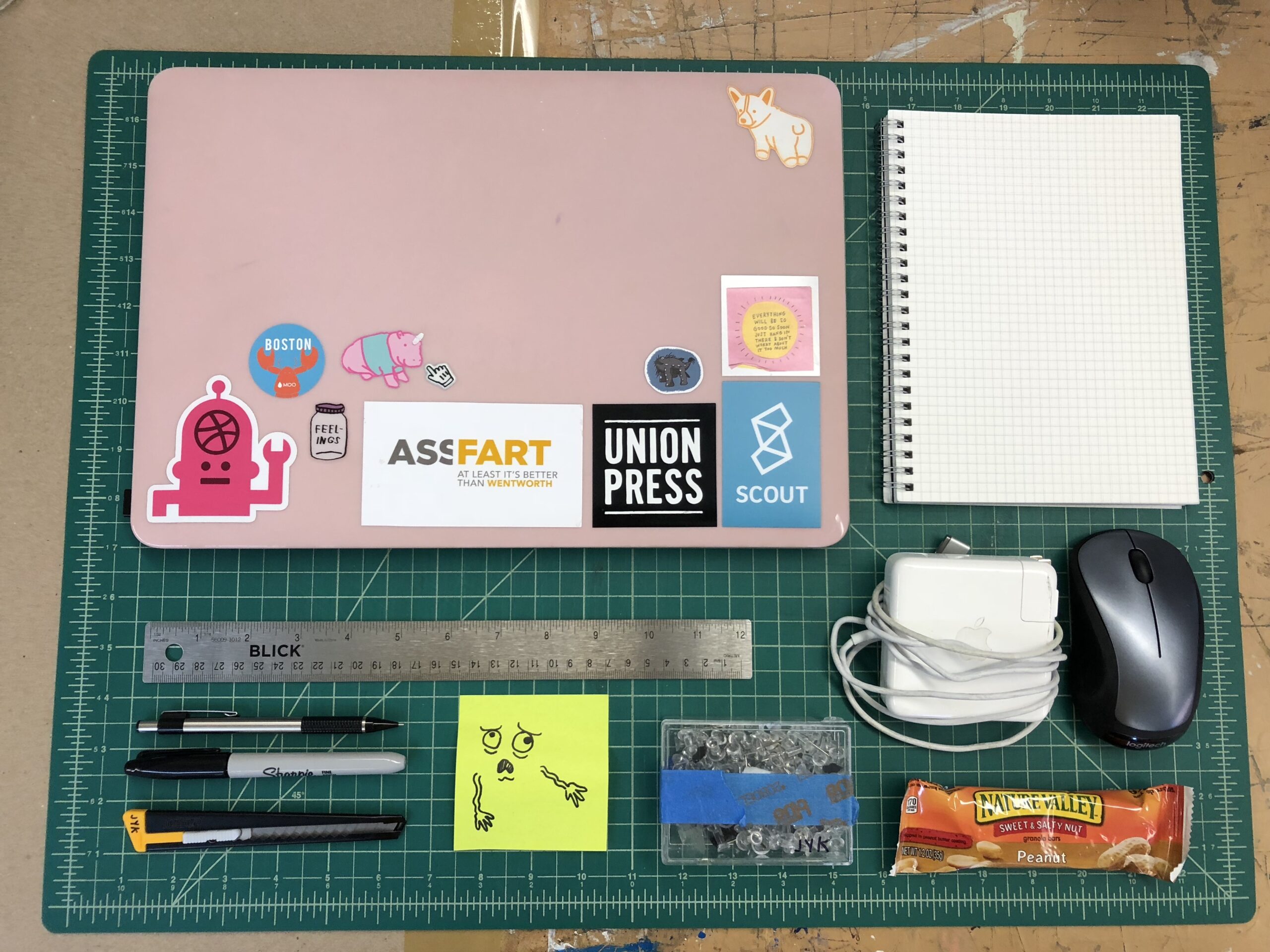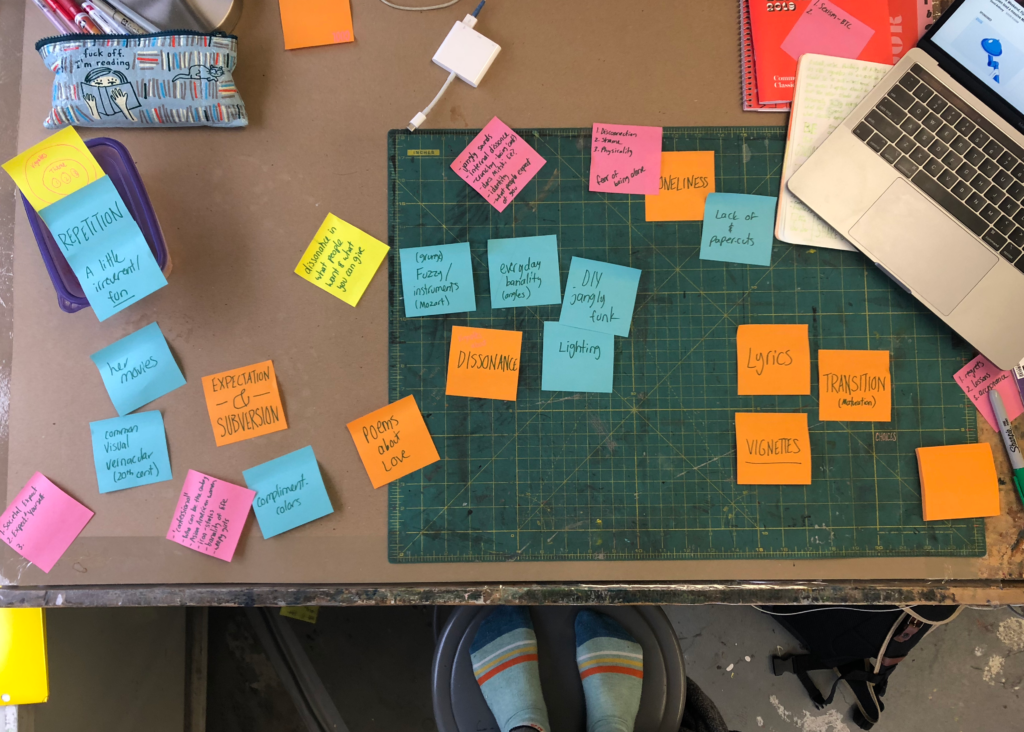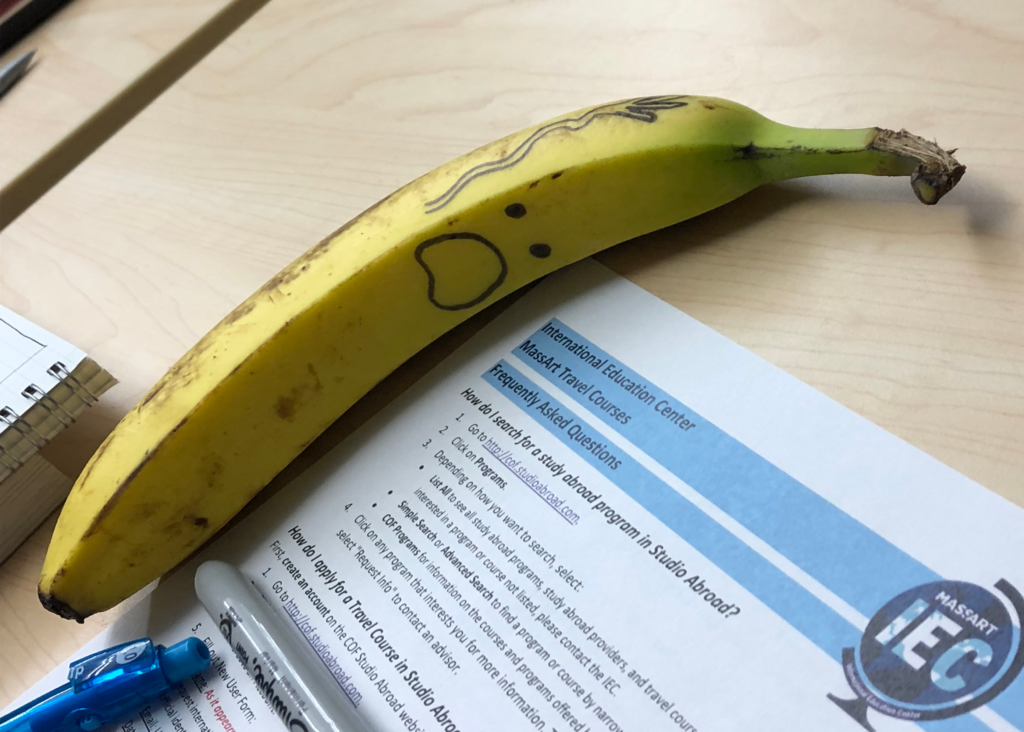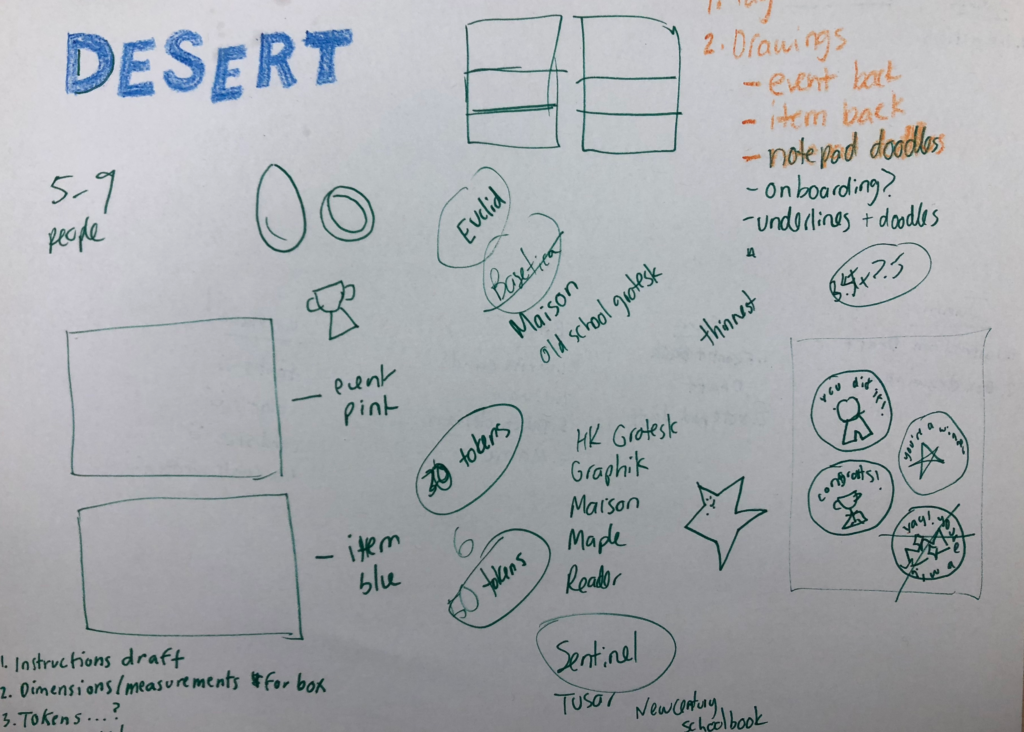
Program
From sophomore to senior year, here’s all the details you need to know about the classes you will be taking every semester.
Fall Semester
Sophomore Studio
This sophomore-level required course meets twice per week for 5 hours; it is a 6-credit course. Sophomore Studio provides a foundation in the methods of concept, image, and form development. Students are introduced to the language of design; working in both traditional and digital media, students will explore issues of form, color, texture, image, sequence and narrative, learning how to harness these elements to communicate concepts clearly, effectively and expressively. Mind-mapping and the sketching of ideas as a part of the process of inquiry and design problem solving also will be covered. Faculty will collaborate and share lectures and demonstrations across all sections.
Why it matters: This class is like your crash course for all things design. You’ll learn to work on a team, think like a designer, what constitutes “good craft,” how to critique and get critiqued, and a lot more. This is also a good time to make friends with your peers!
Typography I (Type I)
A study of the design and use of basic letterforms, typographic contrast, hierarchy of information, major type families and their characteristics, typographic grids, and legibility.
Why it matters: Typography is one of the most important tools in a designer’s tool belt. Here, you will learn the foundations of typography.
Spring Semester
Graphic Design I (GD I)
Basic design principles and skills are applied to graphic design projects. The course presents the formal elements of typography, color, and idea generation in the context of design responsibility and the development of professional attitudes and approaches to problem solving.
Why it matters: While you experimented in different design mediums in Sophomore Studio and got to know typography in Type I, GD I will combine the things you learned to teach you the foundations of graphic design.
Typography II (Type II)
In this sophomore level required course, students continue their typographic education by looking at issues of text type, typographic structure and hierarchy. They develop their sensitivity to type at both a macro and micro level, and explore issues related to typography for print and screen environments. The course meets twice a week.
Why it matters: Continuing on your typographic journey, you will get to hone your skills in new and creative ways. This class is one sophomores usually look forward to because *drum roll* you get to design and bind your own book! This project is great because not only does it teach you about type systems, it introduces you to new materials, paper, and craft.
Fall Semester
Graphic Design II (GD II)
In this junior level required course, students explore how meaning is created through design by looking at visual communication strategies, communication theory, and the roles of message senders and receivers in the communication process. Coursework includes both print and simple time-based applied projects.
Why it matters: Branding is something you are about 90% likely to run into in the real world. Some of you will go on to a career in marketing, and you’ll use the lessons you learned here to do it. You’ll learn about brand assets, packaging, and a lot more.
Information Architecture I (Info Arch I)
This is an introductory course covering basic concepts, methods, and procedures of information architecture with a focus on managing information complexity. This course addresses issues of information structures developed for various contexts and audiences. Subjects of study include print and interactive media, and both static and dynamic approaches to information design.
Why it matters: This class is SUPER important if you are interested in pursuing UI/UX or Product Design. Here, you’ll learn how to organize complex information into digestible bits that your user can understand. You’ll learn about how to identify users and their needs, and how to solve problems with design thinking.
Spring Semester
Typography III (Type III)
In this junior level required course, students continue their study of typography, focusing on issues of authorship and editing, and the designer’s relationship to text content. Projects are more experimental in nature, and move beyond the single project to simple systems. Additionally, the course involves a research component which prepares students for their degree project research the following semester.
Why it matters: Last year you learned how to design a publication with pre-picked content. This year you get to design something from the ground up. It’s awesome, it’s hard, and most importantly, it’s likely going to be your favorite project. You’ll have the freedom to gather your own content and make whatever you want with it. This is the first project you have with almost complete creative license.
Information Architecture II (Info Arch II)
In this sophomore level required course, students continue their typographic education by looking at issues of text type, typographic structure and hierarchy. They develop their sensitivity to type at both a macro and micro level, and explore issues related to typography for print and screen environments. The course meets twice a week.
Why it matters: In this class you’ll get to further develop your skills in interactive media. This will also improve your hierarchy skills.
Electives
Classes | This year you can start taking electives. The Communication Design program offers excellent electives like Web Design, Advertising Design, Packaging Design, etc. But it is also encouraged to take electives outside the major to get more experience in other areas of art and design.
Teaching Assistant | You can also get an elective credit for TA-ing a class. Talk to one of your professors if you are interested.
Internship | You can register your internship as an elective credit. Talk to Rebeka Wright for info.
Fall Semester
Graphic Design IV (GD IV)
Students work on complex projects, researching and developing content. Finished work is portfolio quality, and conceptual thinking, problem-solving, and formal design principles are explored in each critique. Projects allow opportunity for discussion concerning professional business practice and design ethics.
Why it matters: The two projects you make in this class are intended to be part of your final portfolio. It’s a good idea to tailor it to the type of thing you want to do when you graduate.
p.s. we don’t know where GD III went either
Advanced Projects I and II
You will take two of these classes, each taught by an industry professional. These classes are an advanced study in areas of special inquiry within the field of communication design. Students focus on projects that involved design research reflect current industry expertise. Students are expected to perform at an advanced conceptual and formal level.
Why it matters: These classes are very specific depending on the area of design you may want to venture in, i.e. branding or product design. You can also think of it as what type of projects you’d like in your portfolio. If you are lacking, say, an app in your portfolio, you might consider a class that focuses on that. These classes are taught by people currently in the industry. Get to know them! Ask them questions! Spend the time to really learn and absorb whatever info that may have. You never know where you’ll run into them again.
Spring Semester
Portfolio
Preparation of an entry-level portfolio demonstrating professional competence in design, concept, and craft with an emphasis on the student’s particular area of interest. Students pass a review panel, produce a resume, and interview in the professional design community.
Why it matters: In this class, you’ll be tailoring your portfolio to your interests and career path. If you haven’t had interview experience yet, you’ll be required to this semester. You’ll also be working on your resume and (if you like) your personal brand.
Degree Project
A continuation of the research began in GD IV, in this course students synthesize the research, document the design process, and produce a final project based on the chosen subject of their research. At the end of the course, process documentation and design projects are exhibited at a departmental showing.
Why it matters: This is what other schools might call a thesis or capstone project. Basically, you’ll be researching a problem you find important, and solving it (with all the steps in between)! You can choose to Degree solo or with a partner (highly recommend a group project, it’s a stressful time and it’s very helpful to have a buddy to keep you going. You’ll decide what you want to do your project on during your fall semester, so in the spring you’ll get to completely focus on solving your problem instead of finding one.
Electives
Classes | If you still haven’t completed your elective credit requirements, there are many elective you can still take. The Communication Design program offers excellent electives like Web Design, Advertising Design, Packaging Design, etc. But it is also encouraged to take electives outside the major to get more experience in other areas of art and design.
Teaching Assistant | You can also get an elective credit for TA-ing a class. Talk to one of your professors if you are interested.
Internship | You can register your internship as an elective credit. Talk to Rebeka Wright for info.



